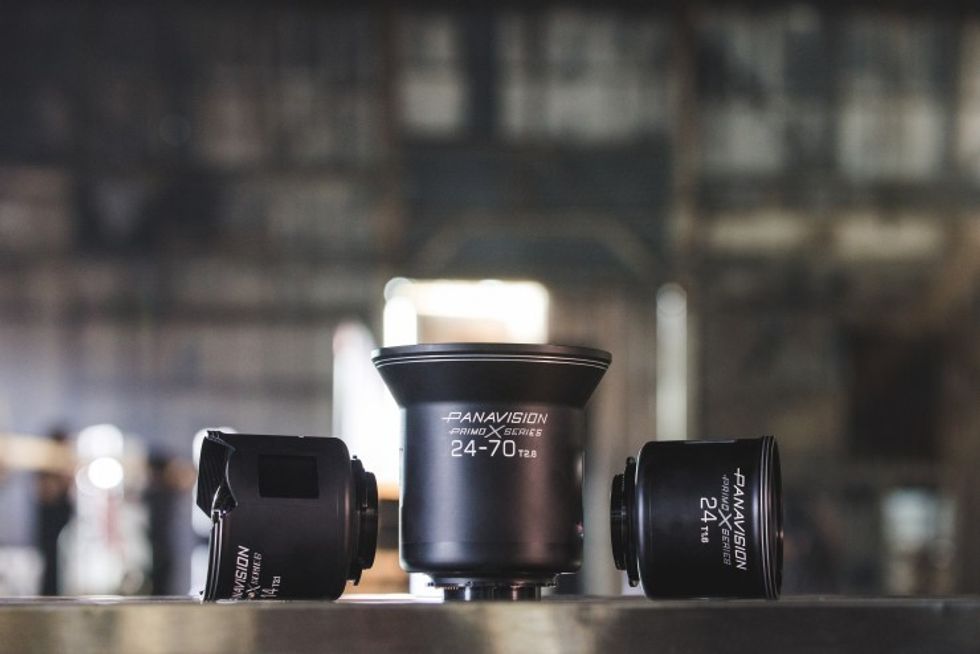Panavision Upgrades Lots of Glass and More to Support Flagship DXL 2 Cameras
Panavision appears committed to growing its collaboratively engineered, high-end DXL ecosystem.

It has been a mere four months since Panavision gave its flagship camera, the Milennium DXL 2, an impressive sensor and workflow upgrade. In a preview the night before the beginning of Cinegear 2018, Panavision CEO Kim Snyder said of the still-young DXL, "Our objective is for this to be the filmmaker's camera." While many have often felt that Panavision only wanted to be a camera for top-of-the line filmmakers, this host of updates offers something for filmmakers up and down the budget ladder to be excited about.
Primo X Lenses
Top of the list in truly bold design is the new Primo X line of lenses. The Panavision Primo lenses have long been acclaimed by cinematographers for their clean imagery, low breathing, and amazing lens-to-lens consistency. With the new X lenses, that image quality now comes in a smaller package. One of the key features of the DXL line since the original release has been internal lens control: you no longer need external follow focus or motors to control FIZ on a lens, since the motors are built into the lens body and controlled through the lens port.
The Primo X glass takes this to its logical conclusion, getting rid of the external rings altogether, making for a compact, integrated, weatherproof system that is going to be ideal for automotive and drone work where light weight and protection are highly important. Since there are no focus rings to show focus distance, Panavision has built in LCD screens that display the proper lens data. We got hands-on with the Primo X lenses at Cinegear and were impressed, so be on the lookout for that video soon.
DXL-M
Maybe that filmmaker is a DSMC2 camera owner and/or shooter, who will no doubt welcome the new DXL-M, an actual physical back for RED's DSMC2 bodies with MONSTRO, GEMINI, and HELIUM sensors, which will benefit enormously from the access they'll then get to features like the DXL menu system (via an app for the iPhone), LiColor2, motorized lenses, wireless timecode (ACN), and the 600nit Primo HDR viewfinder.
The DXL-M appears to be Panavision's solution for the ARRI mini, offering filmmakers a way to get the smaller body of the DMSC2 working with the rest of the Panavision ecosystem. Final verdicts will have to wait for Q4 2018 when the unit ships and we finally see a price point on it.
Liquid Crystal Variable ND
On top of all that, Panavision has also rolled out a Liquid Crystal variable ND filter that is mountable in your matte box. While variable ND has been around as a technology for small in-camera behind-the-lens NDs for a while, variable ND in front of the lens will offer some really amazing integrations. Beyond simply having the flexibility of changing ND intensity without swapping filters or doubling them up (increasing reflections and weight), you should be able to design shots that ramp the ND in sync with the camera, though that will, of course, require extensive testing in prep before you should plan to use it on a shoot.
Considering Panavision's massive commitment to high-quality imaging and lenses, it's impressive that the company was able to develop this technology to its image quality standards.
Additional writing on this post was done by Charles Haine.












